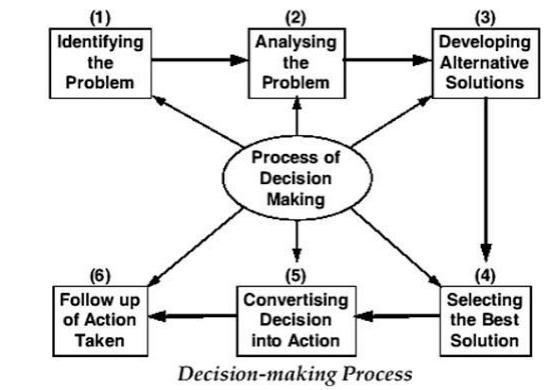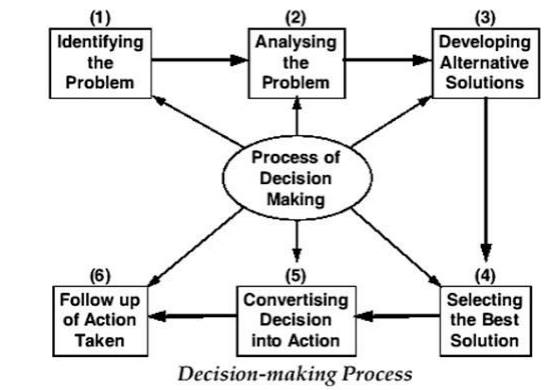Chapter: Principles of Management : Planning
Decision Making Process

Decision Making Process
1. Specific Objective: The need
for decision making arises in order to achieve certain specific objectives. The starting point in any analysis of
decision making involves the determination of whether a decision needs to be
made.

2. Problem Identification: A problem
is a felt need, a question which needs a solution. In the words of Joseph L Massie "A good decision is dependent
upon the recognition of the right problem". The objective of problem
identification is that if the problem is precisely and specifically identifies,
it will provide a clue in finding a possible solution. A problem can be
identified clearly, if managers go through diagnosis and analysis of the
problem. Diagnosis: Diagnosis is the process of identifying a problem from its
signs and symptoms.
3 Search for Alternatives: A problem
can be solved in several ways; however, all the ways cannot be equally satisfying. Therefore, the decision maker
must try to find out the various alternatives available in order to get the
most satisfactory result of a decision. A decision maker
4 Evaluation of Alternatives: After the
various alternatives are identified, the next step is to evaluate them and select the one that will meet the choice
criteria. /the decision maker must check proposed alternatives against limits,
and if an alternative does not meet them, he can discard it. Having narrowed
down the alternatives which require serious consideration, the decision maker
will go for evaluating how each alternative may contribute towards the
objective supposed to be achieved by implementing the decision.
5 Choice of Alternative: The
evaluation of various alternatives presents a clear picture as to how each one of them contribute to the objectives under
question. A comparison is made among the likely outcomes of various
alternatives and the best one is chosen.
6 Action: Once the alternative is selected,
it is put into action. The actual process of decision making ends with the choice of an alternative through
which the objectives can be achieved.
7 Results: When the decision is put into
action, it brings certain results. These results must correspond with objectives, the starting point of decision
process, if good decision has been made and implemented properly. Thus, results
provide indication whether decision making andits implementation is proper.
Related Topics